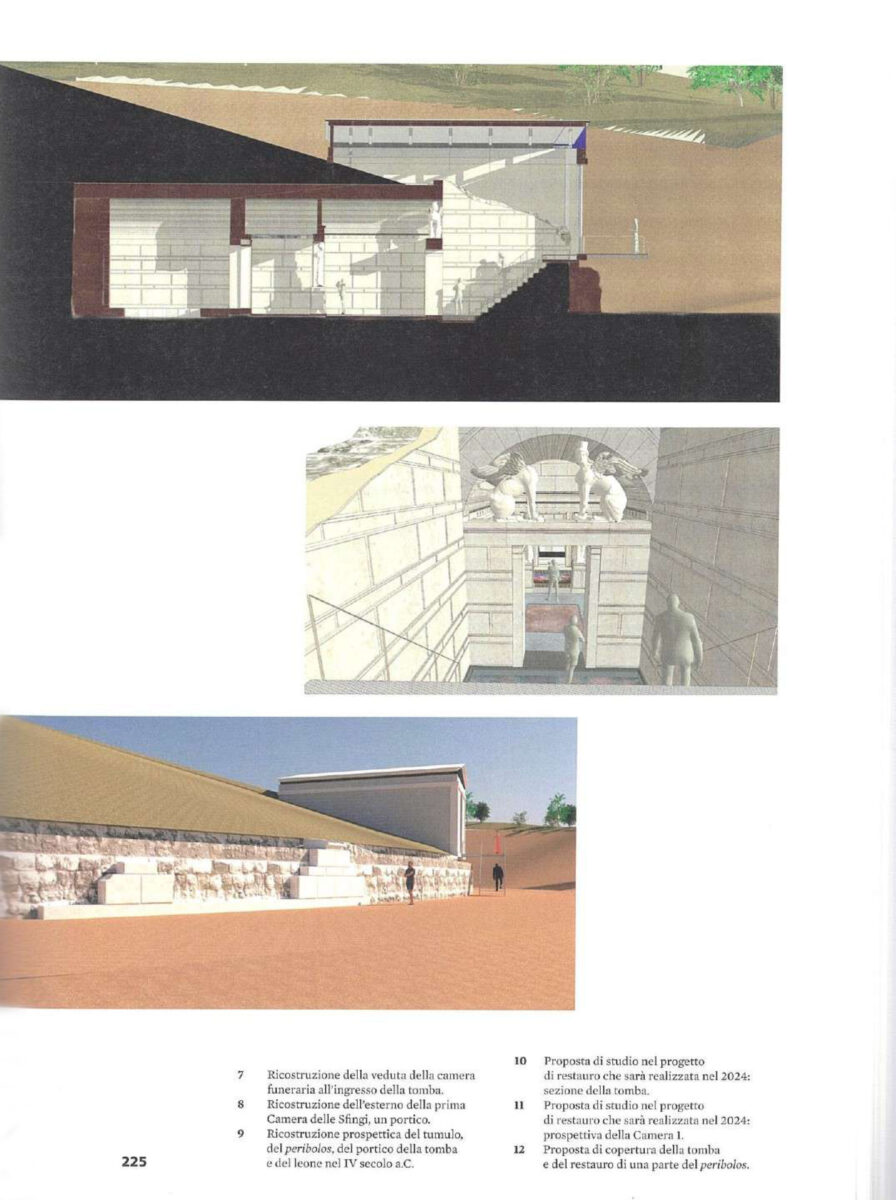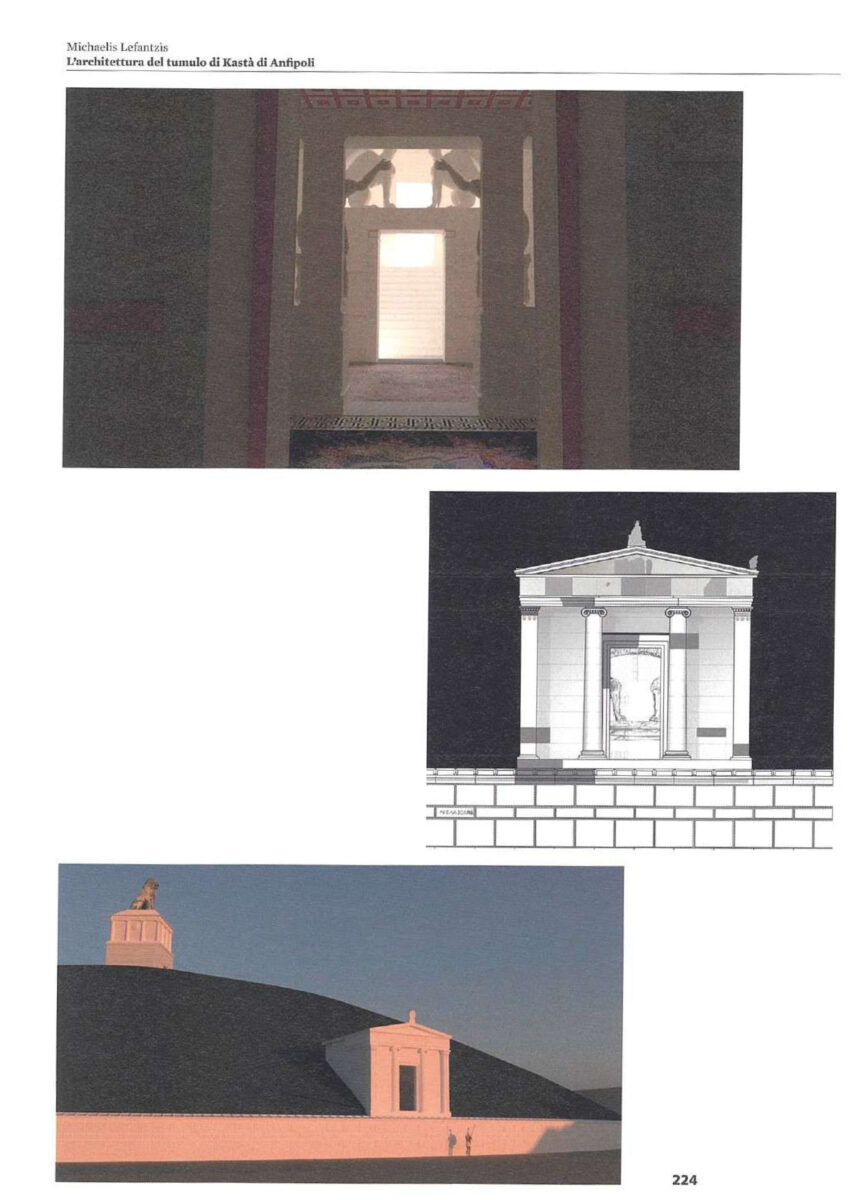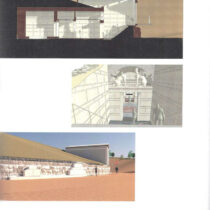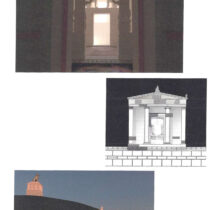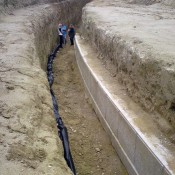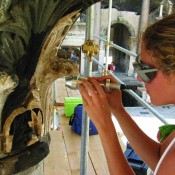Michalis Lefantzis, «L’architettura del tumulo di Kastà di Anfipoli», Filippo Coarelli, Eugenio Lo Sardo (eds.), Alessandro Magno e l’Oriente, Electa, Napoli 2023. ISBN: 9788892823525, pp. 221-225 and 253-269.
This is the first analytical study of the architecture of Kasta, written by the architect of the Ministry of Culture of Greece, Dr. Michalis Lefantzis. This scholar took part in the campaigns which led to the discovery of the monument between 2012 and 2015 and conducted a systematic study of the tumulus which is still ongoing. He also supervised the restoration of the monument. Thus it is fair to state that he has 11 years of experience on this area and that nobody in the world knows Kasta better than him.
The article begins with the history of the archaeological research in the field (pp. 253-254). Then the author exposes in detail how the tumulus was built (pp. 254-256). This section is followed by the consideration of the wall which surrounded and retained the mound (pp. 256-259). In this chapter the important inscription Π]ΑΡΕΛΑΒΟΝ Η carved on two crowning rows of the wall receives the care it deserves for the interpretation of the architectural complex. Comparisons are suggested with other tumuli of the Balcanic peninsula as well as of Asia Minor. However, none of these other examples reaches the grandeur, the elegance and the sumptuousness of Kasta, which thus reveals its exceptional status.
The monument on top of the mound is discussed in the next chapter (pp. 259-260). The author recognizes two phases: in a first phase a tropaion is set up on top of the tumulus and a small heroon was created at south-east of the hill, in the area which in the second phase would become room 4 of the heroon. In the second phase the monumental lion was set up on top of the tumulus, the retaining wall was built around the hill and a large, monumental heroon was constituted at south-east of the hill. The original setting of the lion on top of the hill is guaranteed by the discovery of a fragment of the lion on the slopes of Kasta. Then the author introduces the large funerary heroon created at the south-east feet of the tumulus (p. 261). The general features of this monument are outlined at pp. 261-262. Room 1 of the heroon is analyzed at pp. 262-263, room 2 at pp. 263-264, room 3 at pp. 264-266 and finally room 4 is considered at pp. 266-267. The author underlines the great sophistication of the monument, which is certainly the work of a great architect. He also stresses (p. 267) the fact that the light of the sun reaches the last room of the heroon – room 4 – during the winter solstice. The last chapter (pp. 267-268) concerns the barrel vault whose features are duly indicated. The author writes in the conclusion (p. 268) that the large heroon dates in the last quarter of the 4th c. BC (the type of clamps joining the blocks of marble, the C 14 date of organic elements and architectural details lead to this date) and that the tumulus bears the imprint of cultural choices and vision of Alexander the Great. Notes and bibliography are found at p. 269. Illustrations, of the highest possible quality, complement the article at pp. 221-225.
Antonio Corso
